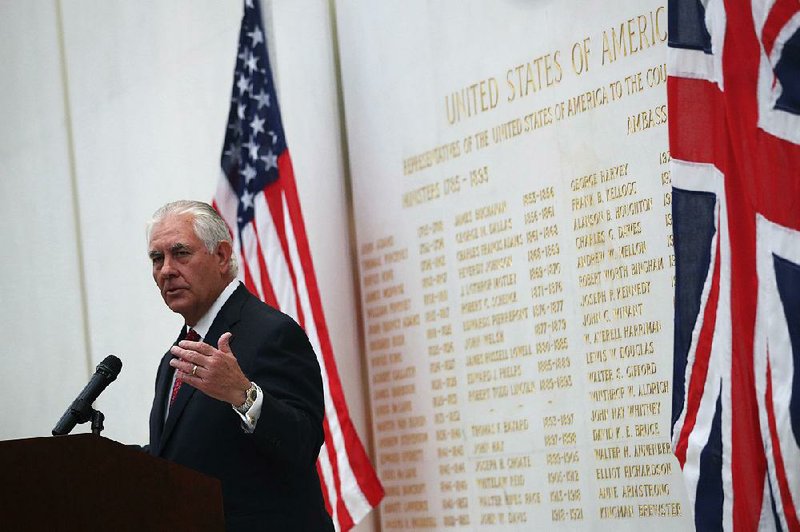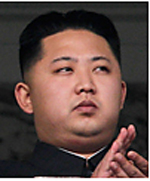SEOUL, South Korea -- North Korea fired an intermediate-range missile over Japan into the northern Pacific Ocean today, U.S. and South Korean militaries said, its longest-ever such flight.
Since President Donald Trump threatened the North with "fire and fury" in August, Pyongyang has conducted its most powerful nuclear test and launched two missiles of increasing range over U.S. ally Japan. It tested its first-ever intercontinental ballistic missiles in July.
Experts have said North Korea is inching closer than ever to its goal of building a military arsenal that can viably target U.S. troops abroad as well as the U.S. homeland.
South Korea's Joint Chiefs of Staff said the missile traveled about 2,300 miles and reached a maximum height of 478 miles.
North Korea has repeatedly vowed to continue these tests amid what it calls U.S. hostility -- by which it means the presence of tens of thousands of U.S. troops in Japan and South Korea. Robust diplomacy on the matter has been stalled for years, and there's little sign that senior officials from Pyongyang and Washington might sit down to discuss ways to slow the North's determined march toward inclusion among the world's nuclear weapons powers.
Today's missile, which triggered sirens and warning messages in northern Japan but caused no apparent damage to aircraft or ships, was the second fired over Japan in less than a month. North Korea conducted its sixth and most powerful nuclear test Sept. 3.
The missile was launched from Sunan, Pyongyang's international airport and the origin of the earlier missile that flew over Japan. Analysts have speculated the new test was of the same intermediate-range missile launched in that earlier flight, the Hwasong-12.
That missile is linked to North Korea's declaration that it means to contain the U.S. Pacific island territory of Guam, which is the home of important U.S. military assets and appears well within the Hwasong-12's range.
At the White House, the launch occurred at the end of the working day, and senior officials gathered in the Situation Room to weigh a response. But the Trump administration chose not to take out the missile on the launching pad, even though they saw it being fueled up a day ago. Vice President Mike Pence, officials said, was even shown images of the missile during a visit to one of the nation's intelligence agencies.
Neither did Japan try to shoot down the missile, perhaps because it was clear moments after the launching that it was not aimed at land, as the U.S. determined.
"The North American Aerospace Defense Command determined this ballistic missile did not pose a threat to North America," Cmdr. Dave Benham, a spokesman for U.S. Pacific Command, said in a statement. It also concluded that the missile "did not pose a threat to Guam."
A North Korean state agency on Thursday had issued an alarming threat to Japan.
"The four islands of the [Japanese] archipelago should be sunken into the sea by [our] nuclear bomb," the Korea Asia-Pacific Peace Committee said in a statement carried by the official news agency.
"Japan is no longer needed to exist near us," the committee added.
The test was met with the usual anger. South Korean President Moon Jae-in instructed government officials to pursue "stern" measures to discourage Pyongyang from further provocations. Japanese Prime Minister Shinzo Abe and U.S. Defense Secretary James Mattis each called the launch a reckless act. The U.N. Security Council scheduled an emergency meeting to be held this afternoon in New York.
Trump has not commented. He is to meet with Moon and Japan's prime minister, Shinzo Abe, in New York next week.
As the missile blasted off at 6:57 a.m. local time, South Korea almost simultaneously launched its Hyunmoo-2 ballistic missile off its east coast in a simulated pre-emptive strike, South Korean defense officials said.
Moon approved the South Korean missile launching and ordered his national security council to meet to discuss the latest North Korean missile test. Moon, a proponent of dialogue with North Korea, has joined Washington in campaigning for tougher sanctions and pressure against the North after its nuclear test this month.
North Korea initially flight-tested the Hwasong-12 and the ICBM model Hwasong-14 at highly lofted angles to reduce their range and avoid neighboring countries.
The two launches over Japan indicate North Korea is moving toward using angles close to operational to determine whether its warheads can survive the harsh conditions of atmospheric re-entry and detonate properly.
North Korea has been accelerating its nuclear weapons development under leader Kim Jong Un, a third-generation leader who has conducted four of North Korea's six nuclear tests since taking power in 2011. The weapons are being tested at a torrid pace and include solid-fuel missiles designed to be launched from road mobile launchers or submarines and are thus less detectable beforehand.
North Korea claimed its latest nuclear test was a detonation of a thermonuclear weapon built for its intercontinental ballistic missiles, which could potentially reach deep into the U.S. mainland when perfected.
The U.N. Security Council unanimously approved new sanctions earlier this week over the nuclear test. They ban all textile exports and prohibit any country from authorizing new work permits for North Korean workers -- two key sources of hard currency. They also prohibit North Korea from importing all natural gas liquids and condensates, and cap Pyongyang's imports of crude oil and refined petroleum products.
Information for this article was contributed by Kim Tong-Hyung, Foster Klug, Matthew Pennington and Mari Yamaguchi of The Associated Press; by Choe Sang-Hun and David E. Sanger of The New York Times; and by Anna Fifield, Dan Lamothe and David Nakamura of The Washington Post.
A Section on 09/15/2017

